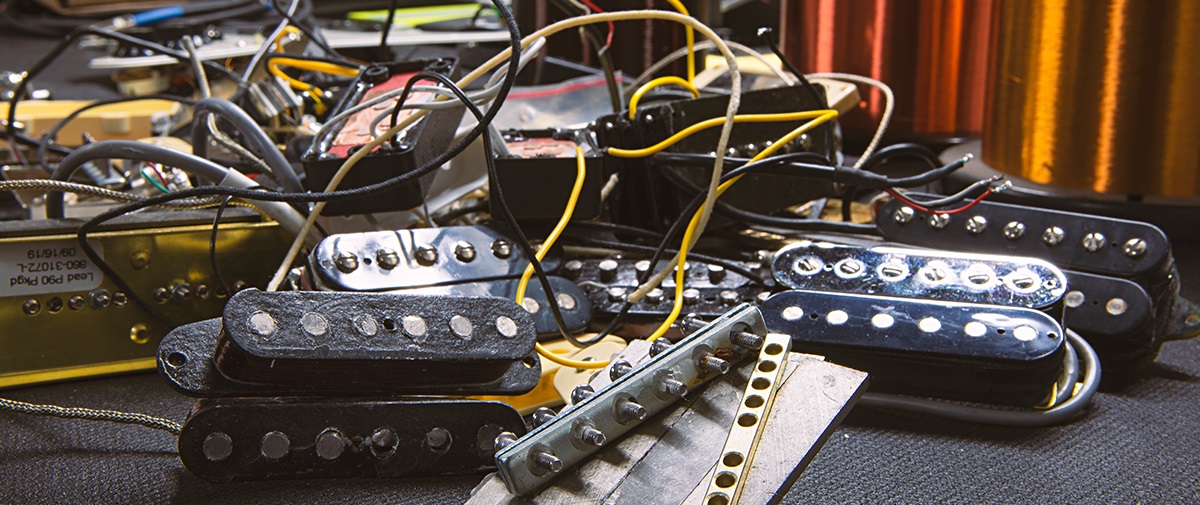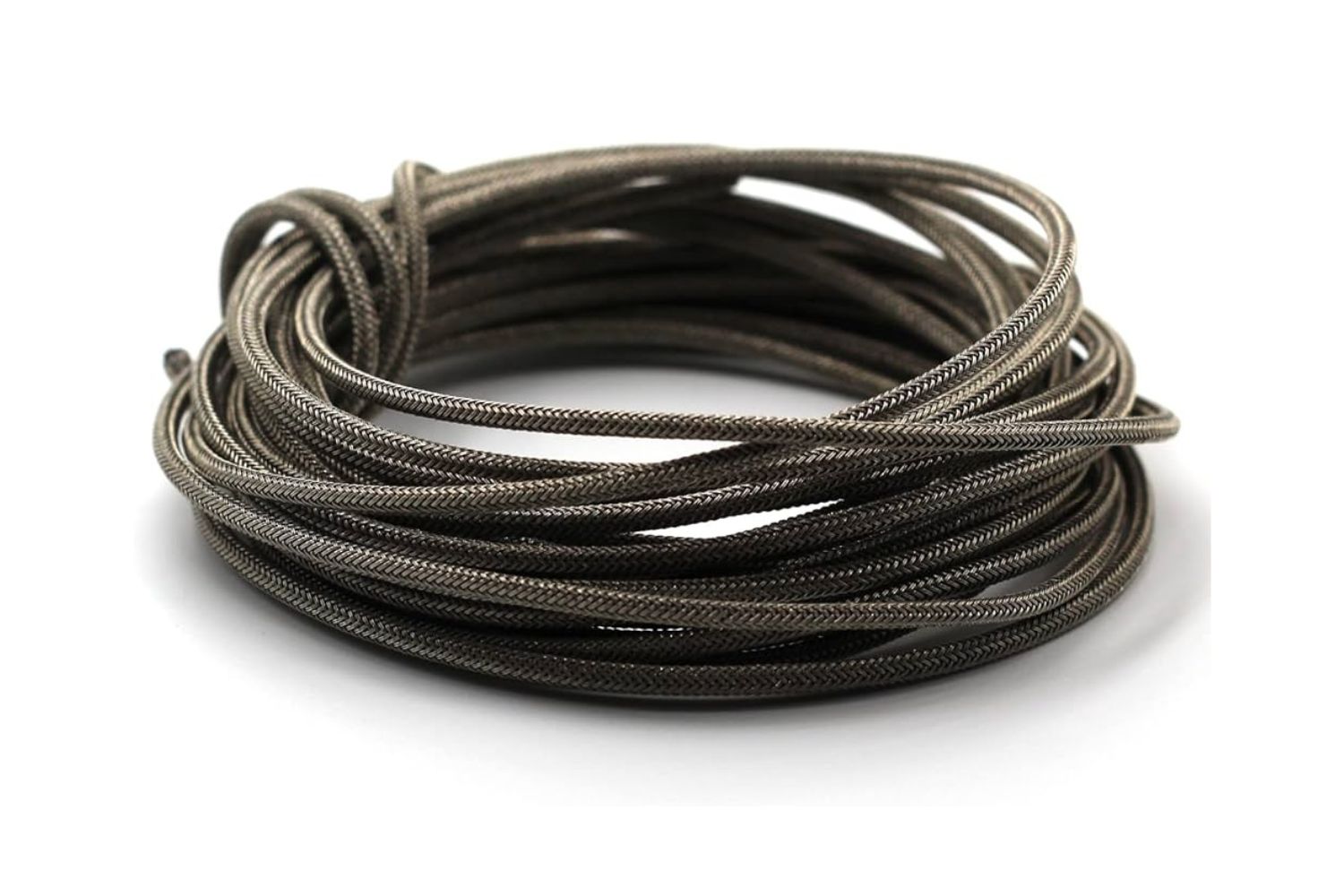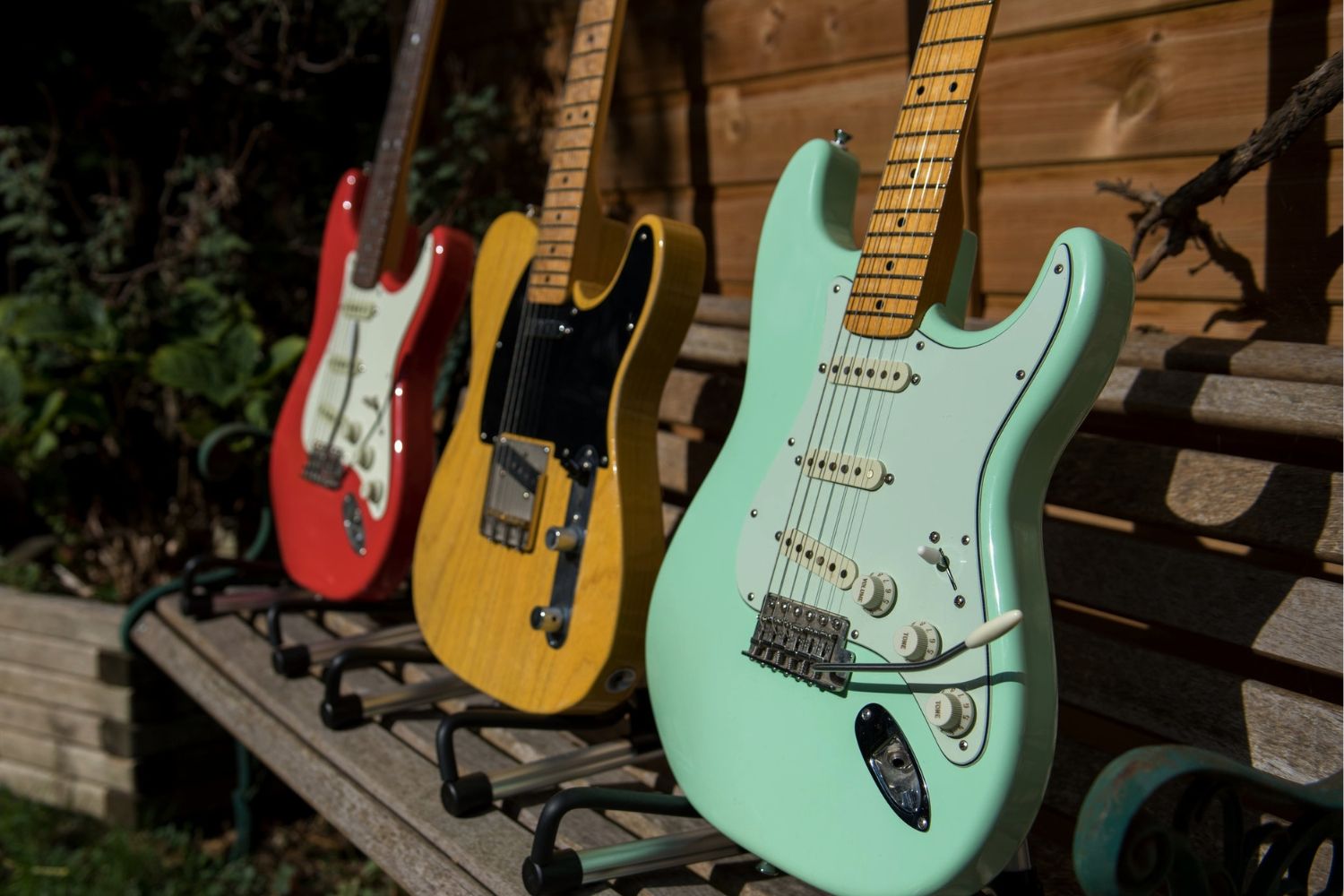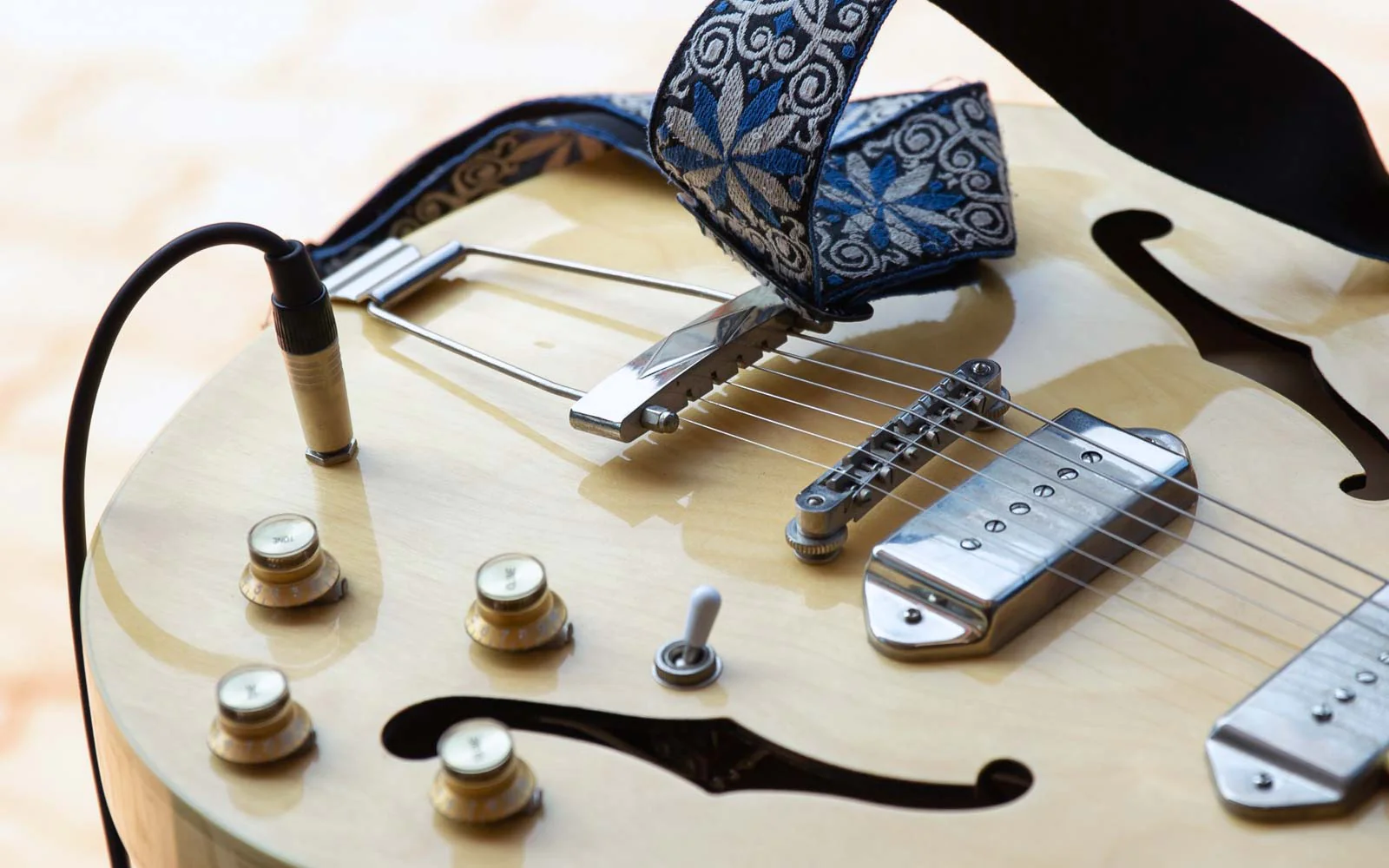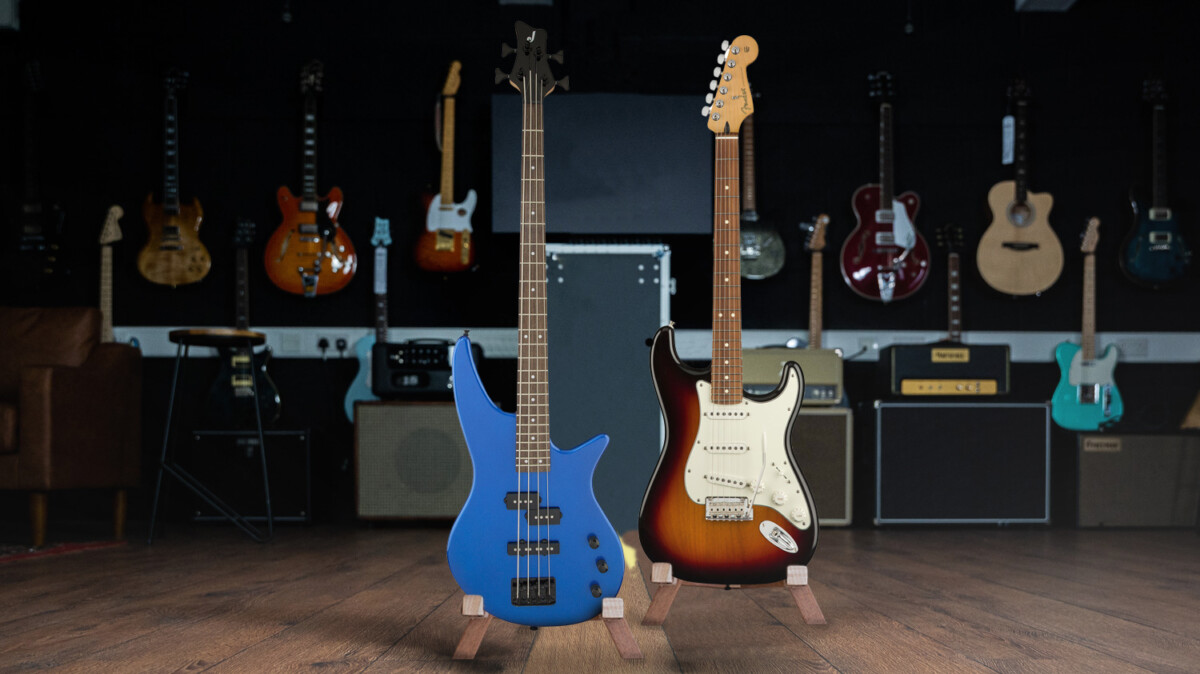Introduction
When it comes to electric guitars, the number of pickups plays a crucial role in defining the instrument's tonal versatility and sonic capabilities. Pickups are essentially the heart of an electric guitar, converting the vibrations of the strings into electrical signals that are then amplified to produce sound. The varying configurations of pickups contribute to the distinct tonal characteristics of different electric guitar models.
Understanding the differences in the number of pickups on an electric guitar is essential for musicians and enthusiasts seeking to explore the nuances of tone and playability. Whether it's the raw, biting sound of a single pickup configuration or the dynamic range offered by multiple pickups, each setup offers a unique sonic identity.
In this article, we will delve into the distinct features and sonic qualities of single pickup, double pickup, and triple pickup electric guitars. By exploring the tonal nuances and playing characteristics associated with each configuration, readers will gain valuable insights into how the number of pickups influences an electric guitar's sound and performance. Whether you're a seasoned guitarist or a curious enthusiast, understanding the impact of pickup configurations will deepen your appreciation for the artistry and craftsmanship behind these iconic instruments.
Single Pickup Electric Guitars
Single pickup electric guitars, often referred to as “one-pickup” guitars, are celebrated for their simplicity and straightforward design. The single pickup is typically positioned near the bridge or neck of the guitar, capturing the vibrations of the strings with precision. This configuration results in a distinctive, focused tone that is characterized by its clarity and directness.
One of the most iconic examples of a single pickup electric guitar is the legendary Gibson Les Paul Junior. Equipped with a single P-90 or humbucker pickup, the Les Paul Junior delivers a punchy, assertive sound that is cherished by rock and blues players for its raw, unadulterated character. The absence of additional pickups allows the instrument to exude a pure, unembellished tonal quality, making it an ideal choice for musicians seeking a no-nonsense, vintage-inspired sound.
Single pickup guitars are renowned for their ability to cut through the mix with a pronounced midrange and a focused, articulate response. This makes them well-suited for genres that demand a bold, straightforward sonic presence, such as punk, garage rock, and classic blues. The streamlined nature of these instruments also appeals to players who value simplicity and a back-to-basics approach to guitar playing.
While single pickup electric guitars may seem limited in terms of tonal options, their inherent simplicity often inspires players to explore the instrument’s sonic capabilities in creative ways. The absence of a selector switch and multiple pickups encourages guitarists to rely on their playing technique and the guitar’s natural voice to shape their sound, fostering a deeper connection between the musician and the instrument.
Ultimately, single pickup electric guitars offer a focused, uncluttered sonic palette that appeals to players seeking a no-frills approach to tone and performance. Their straightforward design and distinctive voice make them a compelling choice for musicians who value authenticity, directness, and the timeless allure of vintage-inspired electric guitar tones.
Double Pickup Electric Guitars
Double pickup electric guitars, commonly known as “two-pickup” guitars, are revered for their versatility and tonal range. This configuration typically includes a combination of pickups positioned near the bridge and neck of the guitar, allowing players to access a broader spectrum of tonal options. The interplay between the pickups enables guitarists to achieve a diverse array of sounds, from bright and twangy to warm and mellow, by manipulating the pickup selector switch.
One of the most iconic examples of a double pickup electric guitar is the Fender Stratocaster, which features a trio of single-coil pickups that contribute to its legendary tonal versatility. With the ability to blend the neck and bridge pickups or engage the middle pickup for a distinctive quack-like tone, the Stratocaster exemplifies the sonic flexibility offered by a two-pickup configuration.
Double pickup guitars are celebrated for their ability to cater to a wide range of playing styles and musical genres. The combination of pickups provides ample opportunities for sonic exploration, making these instruments well-suited for genres as diverse as rock, blues, jazz, and country. By toggling between the pickups and adjusting tone controls, players can effortlessly transition from crisp, biting lead tones to lush, expressive rhythm textures, showcasing the instrument’s dynamic sonic capabilities.
Furthermore, the strategic placement of the pickups contributes to the guitar’s balanced tonal response, with the bridge pickup delivering a bright, cutting sound and the neck pickup offering a warmer, rounder timbre. This balance allows players to craft their desired tonal profile, whether they seek shimmering, bell-like cleans or searing, overdriven leads.
Double pickup electric guitars empower musicians with a versatile sonic toolkit, enabling them to sculpt their sound with precision and expressiveness. The seamless integration of multiple pickups opens up a world of tonal possibilities, making these instruments a go-to choice for players who value sonic flexibility, expressive range, and the ability to adapt to diverse musical contexts.
Triple Pickup Electric Guitars
Triple pickup electric guitars, also known as “three-pickup” guitars, represent the pinnacle of tonal versatility and sonic exploration. This configuration typically features a trio of pickups strategically placed near the bridge, middle, and neck positions, offering an extensive palette of tonal options for discerning players. The interplay between the three pickups, combined with the instrument’s selector switch and tone controls, provides an expansive range of sonic textures and timbres, making these guitars a preferred choice for musicians who demand unparalleled tonal flexibility.
An iconic example of a triple pickup electric guitar is the Gibson Custom Shop Alex Lifeson EDS-1275 Doubleneck, which boasts a total of six pickups (three per neck) to deliver a breathtaking array of tonal possibilities. With the ability to blend and toggle between the pickups on each neck, this instrument exemplifies the boundless sonic exploration afforded by a three-pickup configuration.
Triple pickup guitars are celebrated for their ability to cater to a wide spectrum of playing styles and musical genres, offering an expansive sonic palette that ranges from sparkling, bell-like cleans to searing, aggressive leads. The strategic placement of the pickups allows players to achieve a balanced tonal response across the instrument’s entire range, providing clarity, warmth, and articulation in equal measure.
Furthermore, the intricate interplay between the three pickups enables players to craft complex, nuanced tones that transcend traditional sonic boundaries. Whether it’s the distinctive “quack” of combining the bridge and middle pickups on a Fender Stratocaster or the lush, expressive textures achieved by blending the neck and middle pickups, triple pickup guitars empower players to sculpt their sound with unparalleled precision and artistry.
Triple pickup electric guitars stand as a testament to the artistry and innovation in electric guitar design, offering a sonic playground for musicians to explore and express their musical vision. With their boundless tonal flexibility, dynamic range, and expressive capabilities, these instruments embody the spirit of sonic adventure and serve as a testament to the enduring allure of electric guitars as vehicles for creative expression.
Conclusion
As we’ve explored the distinctive characteristics of single pickup, double pickup, and triple pickup electric guitars, it becomes evident that the number of pickups plays a pivotal role in shaping an instrument’s sonic identity and tonal capabilities. From the focused, unembellished voice of a single pickup guitar to the versatile tonal range of a double pickup instrument and the boundless sonic exploration offered by a triple pickup configuration, each setup presents unique opportunities for musicians to express themselves and craft their signature sound.
While single pickup guitars offer a straightforward, no-nonsense approach to tone and performance, double pickup guitars provide a diverse sonic toolkit that caters to a wide range of playing styles and musical genres. On the other hand, triple pickup guitars stand as a testament to the artistry and innovation in electric guitar design, offering unparalleled tonal flexibility and expressive capabilities.
Ultimately, the number of pickups on an electric guitar serves as a gateway to sonic exploration, empowering players to sculpt their sound with precision, expressiveness, and artistry. Whether it’s the raw, assertive voice of a single pickup guitar, the dynamic tonal range of a double pickup instrument, or the boundless sonic possibilities of a triple pickup configuration, each setup invites musicians to embark on a sonic journey that aligns with their creative vision and musical aspirations.
By understanding the nuances of pickup configurations, guitarists and enthusiasts alike gain valuable insights into the intricate art of tone shaping and sonic expression. As the legacy of electric guitars continues to evolve, the diverse array of pickup configurations stands as a testament to the enduring allure and innovation in electric guitar design, offering a rich tapestry of sonic possibilities for players to explore, innovate, and create music that resonates with depth and emotion.









